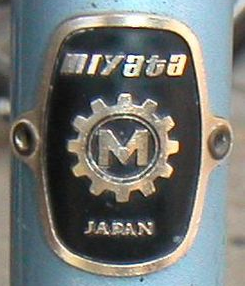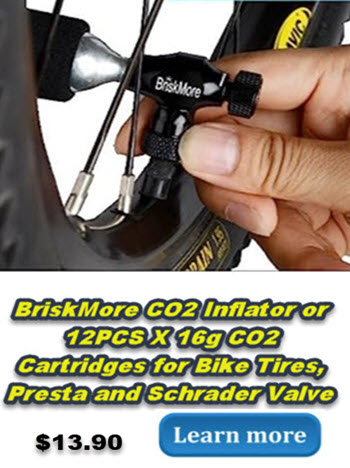MIYATA BIKES
Eisuke Miyata, a bowyer and engineer from Tokyo who also pro duced parts for rickshaws, founded the 1840–1900 Miyata company.
duced parts for rickshaws, founded the 1840–1900 Miyata company.
Miyata Manufacturing was established in Kybashi, Tokyo, in 1881. Ironically, The factory made knives for the Navy as well as weapons for the Imperial Japanese Army, such as the Murata rifle.
VISITOR MOTIVATES MIYATA TO REPAIR BIKES
1889 A visitor from outside came to Miyata bikes to seek the gunsmiths to fix his bicycle. The engineers fixed the bike, and the company started doing bicycle repairs as a side gig.
1890 Miyata re names the business Miyata Gun Works after opening a new plant in Kikukawa. Eitar, Eisuke’s second son, who had a degree in mechanical engineering, creates the first Miyata prototype bicycle utilizing rifle barrels made at the factory.
1890 a new factory in Kikukawa. This was renamed Miyata Gun Works. Eitarō, Eisuke’s second son had a degree in mechanical engineering from Kyoto University. Consequently, he went on to manufacture the first Miyata prototype bicycle using rifle barrels produced at the factory.
1892 The early success of Miyata’s bikes was boosted by a request from crown prince Yoshihito (later Emperor Taishō). He commissions Eitaro to build him a bicycle.
1894-95 Unfortunately, even though they were successful, Miyata halted production of bicycles to focus exclusively on arms manufactured during the First Sino-Japanese War.
Laws Changed The Direction Of Miyata
1900 Japan changed its laws to allow the import of foreign
rifles. Subsequently, the flooding of the market with cheap imports hurt Miyata’s business. Upon Eisuke’s death on the 6 of June, Eitarō converted the business entirely to bicycle manufacturing.
He produced bicycles under the Asahi and Pāson brands. Miyata’s entire production of Asahi bicycles was purchased by the Imperial Army. This continued until the end of the Russo-Japanese War in 1905.
MIYATA INNOVATION AND RELIABILITY
In the 1930s, Miyata introduced its first lightweight, high-quality bicycles. These models gained popularity among professional and amateur cyclists alike. In the 1950s, the company pioneered the use of chrome-molybdenum steel, a lightweight and durable material, in their bicycle frames.
MIYATA TRANSFORMS FRAME BUILDING
Miyata pioneered triple butted frames and revolutionized frame building techniques. Consequently, Miyata was contracted by multiple local brands to build their bicycles.
1959 Panasonic Corporation becomes a shareholder.
Earlier Miyata models carried numeric names (e.g., Miyata 710).
Late 1970’s Miyata begins using the same names writing out the numeric names (e.g., Miyata Seven Ten). 1970s to mid-1980s Miyata bikes are built with high-quality
Japanese lugged steel frames and Shimano or Suntour
components.
Miyata Bikes Creates Sport Entry Models

Series Number System 90 and 100 series were sports/entry level bicycles. 200, 600 and the 1000 models were touring bicycles, with the level of bicycle increasing with first digit in the series.
In general, a 200 series touring bicycle would be roughly equivalent to a 300
series competition/fitness bicycle. The 300, 400, 500, 700, 900 series were mid-range competition/fitness bicycles — with the level of quality increasing with first digit in the series.
There were know to be sub-categories of some models. For example, there was a 110 and a 110SP model. The 110SP had aluminum rims and self centering brake calipers which the regular 110 did not have.
The top line, pro series bicycles were named non-numerically. 1000 series and X000 series bicycles were competition/fitness models with non- ferrous frames.
MIYATA BIKES MODELS IDENTIFIED BY NUMBERS
Usually, the last two digits of the model number indicated the number of available gears (e.g., 912 was a 9- series 12 speed and a 914 was a 9 series 14 speed).
The Miyata brand still exists and it had a joint
venture with the Dutch Koga until 2010. DK was a Dutch bicycle manufacturer established in Heerenveen Netherlands.
2011 Miyata Bikes announced plans to once again sell bicycles under its own Miyata Japan brand. Its new frames were based on the Koga Miyata frame. Interestingly, same frame Peter Winnen won the Alpe d’Huez stage of the 1981 Tour de France.
The last two digits of the model number indicated the number of available gears (e.g., 912 was a 9-series 12 speed and a 914 was a 9 series 14 speed). However, this
was not always the case.
Miyata Model Number Designations
- Miyata 9x: This was the bottom of the range, entry-level model. Triple butted tubing, Shimano/Suntour entry-level components.
- Miyata 1xx: Low-level model aimed at the casual consumer. Chromoly triple-butted main tubes, hi-ten stays, toe clips/straps, available in both men’s and mixte styles.
- Miyata 2xx: A popular lower-end touring model. The 1984 catalogue indicated the 210 used straight-gauge tubing, Dia-Compe cantilever brakes and Shimano triple drive train.
- Of course, later models used 700 wheels; earlier models used 27″ wheels. Braze-ons on front and rear dropouts, cantis front and rear, horizontal rear dropouts, one bottle braze-on, rear rack braze-ons, and flat-top fork crown.
Mid Range Miyata Road Bikes
- Miyata 3xx: A mid-range road bike model from the “Semi-Pro” group, with Shimano 105 brakes, derailleurs, and shifters. The 105 was also shown with an arrow-like graphic.
- The Miyata 310/312 had a shorter wheelbase than the touring models. However, with clearance for fenders and wider tires. For this reason, it is sometimes called a “sport-touring” model
- Features included double- or triple-butted Cr-Mo tubing (depending on year), 525 Crown, SR CTD handlebars, and Araya rims.
- Earlier models had hi-tensile steel forks. Later forks were “Mangalight” manganese alloy. Conversely, Some years are equipped with an “aero-style” shifters, mounted on a single brazed-on post on top of the down tube.
- Miyata 5xx Competition (part of the “Semi-Pro” group): A higher-end road bike than the 310/312, with more “aggressive” geometry.
- Miyata 6xx: A quality touring model, one step down from the 1000. Interestingly to note, it came with a slightly different frame geometry and lower level components.
- Miyata 7xx: A mid- to high-end road bike from the “Semi-Pro” group. Early models had Suntour parts, including an odd 3-wheel rear derailleur, possibly using the same frameset as the 910.
- Miyata 9xx: Miyata’s high-end road bike from the “Semi-Pro” group, with Shimano 600 components.
One of the Finest Touring Bikes Made
- Miyata 1000: Touring bike with splined, triple-butted Chromo tubing. However, some report the 610 to be stiffer than the 1000. 1997 model had a mix of Shimano 600 and Deore XT parts (600 DT shifters, XT derailleurs).
- Miyata 1400: A high-end road bike sold only as a 1989 model with Shimano 600 components. It was higher-end than the 914 that was sold in the same year.
- Miyata Cross: A top-of-the-line “cross” bikes (which included the Alumicross, Quickcross, Sportcross, and Triplecross). The Alumicross was introduced in the late 1980s with standard-size aluminum main tubes bonded to steel lugs and a Chromo fork.
- Seat and chain stays are steel with the seat post binder bolt holding the seat stays to the seat post lug. In fact, the Quick, Sport, and Triplecross were triple-butted cromoly.
- Miyata Pro/Team/1200: These are the high-end race ready models (Team Miyata, Miyata Pro, etc.)
CLICK ON ITEM FOR MORE INFORMATION
 |
 |
 |
 |
We earn from qualified Amazon purchases with NO cost to you. ANY item that you need or were going to purchased anyway through any of our links, helps support this site. Thank you for your support!

